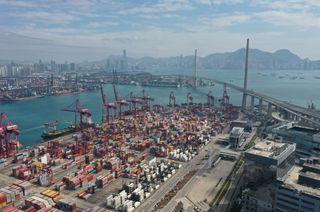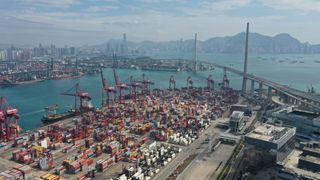The term ‘economic security’ has only recently emerged in the lexicon of some developed countries. Economic security touches on many cross-cutting topics, making it hard to define. It includes the weaponisation of economic dependencies; trade coercion; critical infrastructure, technology, and materials; supply chains; energy security and strategic investments. In recent years, countries and groups such as Japan and the European Union (EU), have passed economic security acts and published formal strategies. Landmark US industrial policy, including the Inflation Reduction Act (IRA) and CHIPS and Science Act, acknowledges the rise in economic security challenges and signals US resolve to address them.
These unprecedented economic security efforts were driven by shifting global economic dynamics, including a pandemic-fuelled recession, China’s increasing use of economic coercion and supply chain disruptions, all of which have impacted Australia. This has stoked ongoing discussions within Australia on how to define economic security and respond to its challenges and the initiatives of other countries.

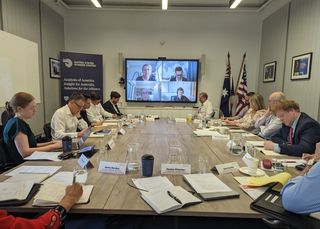
To discuss the state of economic security challenges and possible responses, in late 2023 the United States Studies Centre (USSC) hosted a ‘track two’ dialogue of leading Australian thinkers including former officials and policy practitioners, experts, academics, and private sector representatives. Designed to elicit free and open discussion, the session clarified some key themes and policy challenges that Australia faces on economic security, although there was no universal consensus among participants:
- An Australian understanding of ‘economic security’ is coalescing, but there is no shared consensus or response
- Australia’s current approach to economic security challenges – prioritising flexibility over an organised framework – has worked well for the overall economy, but a degree of additional government advocacy and structure could help into the future
- While responding to economic security challenges in an ‘ad hoc’ manner is currently favoured by the federal government, it works less well for Australian businesses
- Australia is split over US industrial policy and is wondering ‘what next’ as the United States shifts away from free trade
- Economic security strategies in Australia and partner nations will have to be responsive to developments in China
- Economic security challenges present tough trade-offs that are forcing Australia to debate which interests should win out and how to balance its policy objectives
These themes are elaborated on in the following sections, informed by analysis on the day, and are followed by recommendations discussed by some participants that the Australian Government could consider.
1. An Australian understanding of ‘economic security’ is coalescing, but there is no shared consensus or response
There is a lack of consensus within the Australian Government on what is meant by economic security and what it seeks to address. Often, government will use ‘economic security’ interchangeably with ‘geoeconomics’, ‘economic sovereignty’ or ‘economic resilience’.
There is also no lead agency dedicated to responding to economic security challenges. Officials bring different and sometimes competing priorities and perspectives, so while attempts at greater coordination within government are being made, different agencies representing foreign affairs and trade, defence, industry, climate and energy are conceptualising the challenge of economic security differently.
Recently, senior Australian politicians and officials began articulating the rising challenges of economic security. Through ministerial speeches, new domestic policies, and strategies, a picture of Australia’s response is emerging (refer to Appendix A).
Australia has multiple objectives related to economic security – including growth, productivity, de-risking interdependence, national security, supply chain resilience, decarbonisation, alliance management and political economy – but has limited resources to support these objectives simultaneously and prioritisation is difficult. Further complicating their job is prioritising “offensive” and “defensive” economic security policies. For example, the EU has focused on more defensive measures, including investment screening and security of intellectual property (IP) and research, while the United States has pursued more offensive measures including industrial policy, export controls and outbound investment restrictions.
| Minister | Date | Quote |
|---|---|---|
| Jim Chalmers, Treasurer |
September 2023 |
“We’re entering a landscape where trading patterns are increasingly being shaped and influenced by national and strategic interests, not just economic ones.” |
Richard Marles, Deputy Prime Minister and Defence Minister |
April 2023 |
“… the threat is not that we’re about to be invaded, but our exposure to economic coercion, and to coercion from an adversary that is greater and the potential for that coercion going forward is much more significant.” |
| Penny Wong, Foreign Affairs Minister |
April 2023 |
“Strategic competition is operating on several levels. Domains that we might prefer to separate – economic, diplomatic, strategic, military – all interwoven, and all framed by an intense contest of narratives.” |
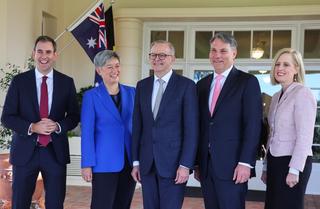
2. Australia’s current approach to economic security challenges – prioritising flexibility over an organised framework – has worked well for the overall economy, but a degree of additional government advocacy and structure could help into the future
Australia weathered the storm of China’s economic coercion that began in mid-2020, not because it had an institutional framework in place or dedicated advisers on economic security, but because it has flexible markets. Australia was able to offload its exports to other markets around the world, ranging from Saudi Arabia to Vietnam. Given the characteristics of the Australian economy – free market and trade-oriented – it could be best to continue with this flexible approach and not rush to institute greater government control in responding to new challenges.
Yet, more urgent than a dedicated economic security strategy is an upgraded analytical capacity within the Australian Government to better quantify the dynamics fuelling economic security concerns. Such a capability could be overseen by the Treasury which is responsible for forecasting shocks. For example, the EU’s economic security strategy emphasises responding to shocks rather than strategic competition. Economic security policy should be embedded across Australian agencies, with existing taskforces made permanent bodies for enhanced whole-of-government coordination on economic security issues. Sector-specific approaches to economic security issues could help navigate the difficult trade-offs, reflecting the reality that national resources are distributed unevenly.
3. While responding to economic security challenges in an ad hoc manner is currently favoured by the federal government, it works less well for Australian businesses
Post-Covid-19 and with the return to more stable Australia-China relations in 2023, the Australian private sector is undecided about whether to “de-risk” (a term coined by Ursula Von der Leyen, the President of the EU Commission, which means reducing trade and investment in certain sectors related to national security), and reduce dependencies on China or continue to focus on China’s large market and investment. A 2023 survey by the Australian Chamber of Commerce and Industry found that 71 per cent of businesses were concerned about the need to diversify markets.
A 2023 survey by the Australian Chamber of Commerce and Industry found that 71 per cent of businesses were concerned about the need to diversify markets.
However, Australian businesses lack understanding of the extent and trajectory of geopolitical volatility. Although there has been some improvement in awareness following China’s economic coercion, Russia’s invasion of Ukraine and disruptions to shipping routes through the Red Sea, the level of understanding of geopolitical risk differs significantly between industries and businesses of different sizes. Where the critical minerals industry might be acutely aware of geopolitics, other Australian exporters without direct strategic linkages can be largely in the dark.
Broadly, while businesses are factoring in risks to their cost-benefit calculations more than in the past, they generally lack an in-depth understanding of geopolitics. They are unfamiliar with the internal politics of China and the United States and subsequently do not invest sufficiently in geopolitical risk. Government could provide targeted support to assist businesses to better understand the geopolitical context and the benefits and risks of diversifying away from China.
Although an economic security strategy could help inform business of economic security challenges and provide direction, such as the likelihood of supply chain disruptions and trade restrictions, the absence of structure – while uncomfortable for business – has largely worked for the Australian economy thus far. Moreover, the government is resistant to publishing formal strategies, preferring to use official speeches to represent strategy. Strategies are challenging to write, contentious, and easily overtaken by events. However, major strategy documents do force government to think through what it is trying to achieve, the engagement process, and the public narrative. A formal statement of Australian economic security principles and objectives backed by engagement forums could provide direction and help business.
Further, governments often distrust business’ motivations and vice-versa. For example, while the government is wary of companies seeking subsidies and other handouts, companies (and potential investors, like banks) are eager to see the government itself show skin in the game before they invest. This is complicated by some businesses (such as the critical minerals and manufacturing sectors) potentially benefiting from the rise of economic security and a government focus on shifting supply chains. However, since the Covid-19 pandemic, there has been progress in public-private engagement and recent economic strategies directed towards regional partners have been more inclusive in their development. The bottom-up engagement process adopted for the 2023 Southeast Asia Economic Strategy, for instance, was a step in the right direction. More interaction between public and private stakeholders through informal groupings and conferencing, for example, is needed. Greater coordination between the Australian government and its international partners would also be helpful, such as credit agencies from likeminded countries underwriting risk for Australian businesses.
4. Australia is split over US industrial policy and is wondering ‘what next’
Australia is witnessing a ‘crossing of the Rubicon’ moment in the US policy approach to markets. Driven by both domestic and foreign policy concerns, the United States has shifted away from championing free trade, unrestricted flows of resources, and minimal government intervention of previous decades. Pushback against the hollowing out of the US manufacturing industry and job losses, and concerns about China’s IP theft, industry subsidies, and access to advanced military technologies has culminated in what the Biden administration has dubbed a “new Washington consensus” or “Bidenomics”.
Juggernaut industrial policy like the Inflation Reduction Act, continued tariffs on steel and aluminium, export controls and investment restrictions represent a fundamental reorientation in how the United States approaches the free flow of goods and capital. The shifting economic orthodoxy in the United States can be cause of concern to some in Australia as a free-trading, export-oriented economy.
In Canberra, there are two schools of thought on US industrial policy. Firstly, Australia – as a US-free trade partner – is buoyed by the potential to access US subsidies for clean energy technology and technological advances that would lower production costs in emerging clean technologies. The other view in Canberra is that massive US subsidies distort the market, sucking talent and capital away from Australia to the United States. Rather than focus on the appropriateness of the US response, Australia needs to direct its energies towards repositioning for this reality.
If Australia seeks to follow in the footsteps of many of its allies and partners in pursuing industrial policies or building new industries, changes in its economic and financial systems may be necessary.
Industrial policy is more than the government “picking winners.” It involves setting up whole new ecosystems around industries, involving workforce development and bank lending. If Australia seeks to follow in the footsteps of many of its allies and partners in pursuing industrial policies or building new industries to either secure supply or feed into shifting global supply chains, changes in its economic and financial systems may be necessary. For example, in countries where industrial policy is more prominent like Germany, China, South Korea and Japan, banking systems are set up to support their industries, there is more engagement with unions and workforce building, greater state power, and less focus on shareholders.
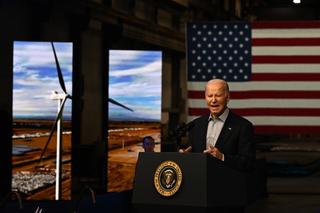
5. Economic security strategies in Australia and partner nations will have to be responsive to developments in China
There are changes afoot in China’s economy – some good, some bad – with global implications. Since 2020, the Chinese economy has faced hurdles, with a slow-down in economic growth, investment and demand, resulting in a slump in demand for foreign imports. While countries try to lessen their dependence on Chinese exports, China’s currency is depreciating, which will make its exports cheaper for the rest of the world and likely exacerbate trade tensions between Beijing and the Western world. China is increasingly investing in technologies such as electric vehicles, solar panels and semiconductors – with excess production exported to overseas markets and forming part of the energy transition in the United States, Australia and the EU. Whatever happens, China will remain integral to the global economy as a huge consumer market and a manufacturing powerhouse.
Beijing has viewed the shift in US policies as an attempt to contain China, economically and technologically. Beijing views Australia as part of an effort to militarily counterbalance China – including through efforts like AUKUS – but wonders how Australia will respond to changes in the US economic policy. Canberra has insisted that China will remain an important trading partner for Australia but it has increasingly restricted Chinese investment in certain critical sectors, such as rare earth minerals. The United States has announced restrictions on outbound investment, which bans US investors from financing advanced technologies in China. If Australia joins the United States in restricting outbound investment with China, relations could sour again.
China’s political goals also matter for Australia’s policy. Beijing’s punitive trade measures placed on Australian goods in 2020 made clear that Beijing will control trade for its own policy goals. For Beijing, this type of trade weaponisation may be less about policy and behavioural change and more about sending a message. Responding to Chinese trade restrictions is challenging – countries could retaliate with their own sanctions or try to diversify their export and import markets – but doing so can be expensive and difficult. The situation is fluid, and it is uncertain what broader lessons China took from its trade coercion of Australia and how other targeted countries could respond in the future.
6. Economic security challenges present tough trade-offs that are forcing Australia to debate which interests should win out and how to balance its policy objectives
Economic security challenges can force Australia into choices, where advancement in one area could mean disadvantages in another. Some of the key trade-offs identified in discussions included: security vs prosperity; specialisation vs industrialisation; protection vs collaboration; and emerging vs developed economies.
Security vs prosperity: Some argue that the higher costs associated with industrial policy, onshoring, and friendshoring production threaten prosperity and other interests. For example, the IRA incentivises the domestic production of clean technologies for the energy transition. While this makes security of supply safer and may create new jobs, the United States may be forgoing cheaper technologies from China that would make the energy transition more cost-effective. Competition, rather than cooperation, between China and the United States on emerging technologies could also limit the pace of technological advances that would benefit both countries and the rest of the world.
Specialisation vs industrialisation: Classical economic theory suggests countries should focus on producing what they are best at and trade freely. This was emphasised in a July 2023 report by the Australian Productivity Commission, which cautioned against the use of industrial policies at a cost to taxpayers and living standards. Some participants argued that a focus on security diverts attention from the primary role of the government in economic policy: managing productivity growth and the distribution of income. Two parallel and competing technology ecosystems in the United States and China could lead to slower advances and a divergence in global standards. On the other hand, countries that have traditionally embraced free trade, such as the United States, are increasingly concerned about the hollowing out of their domestic industrial bases and loss of technological and scientific advancements overseas.
Protection vs collaboration: In the higher education sector, there may be a trade-off between protecting research and intellectual property and maximising the breakthroughs possible from international collaboration. By restricting research to citizens from certain countries, the potential for advancements in technology and other industries is reduced. For example, although the presumption is that Australia develops technology China wants to steal, China – in fact – has developed critical technologies that Australia desires. China is a world-leader in several emerging technologies and manufacturing techniques. Reforms to export controls for technology sharing is an increasingly pressing challenge for Australia. A recent bill introduced to parliament would restrict research with non-AUKUS countries in sensitive technologies.
Emerging vs developed economies: Another question raised was the impact of a more fragmented trading system among developing economies. Many Asian countries were able to develop their economies through export-led development, absorbed by consumption-based economies such as the United States. As the US pivot to domestic manufacturing starts to impact global supply chains, the previous model of economic development may not be viable for emerging economies. This will be particularly felt by countries in Africa. Too much focus on short-term supply chain risks could lead to long-term risks from slower growth and widening global inequality.
Preparing Australia for a future of economic security challenges
Given the growing importance of economic security on the world stage and the difficult trade-offs involved, several policy solutions for Australia were raised.
- First and foremost, what emerged was the need for the Australian Government to increase its analytical capabilities and data tracking economic security risks.
- Then, prioritise ruthlessly the risks the government is most concerned about, including clear objectives from ministers.
- Creating a priority list would provide clarity for allocating government resources and be a signal to the private sector. This could come in the form of a national Economic Security Strategy or adviser – although there were differences of opinion on whether a formal structure was superior to ad-hoc measures in responding to shocks.
- Next, Australia would benefit from articulating where economic security sits in its hierarchy of interests and where it connects to national security.
- Policymakers need a framework to navigate the inherent risks and trade-offs with economic security policies – including impacts on security, the economy and broader society.
- Concurrently, there is a need for government to start a national conversation with the Australian people to gain social licence to navigate the trade-offs associated with economic security.
- Some regulatory reforms may be necessary, such as:
- Streamlining assessments at the Foreign Investment Review Board and the Australian Competition and Consumer Commission
- Increasing security clearances to the private sector
- Reviewing the tax concessions for venture capital funds.
The rise of economic security represents a big shift in how Australian policymakers and business must think about the global economy and Australia’s place in it. Australia will continue to grapple with big-picture questions, most notably, striking the right balance between national security and economic prosperity, and the costs and benefits of restricting economic links. With deeper and more forthright communication between the government, industry and the Australian people, all arms of Australia’s national power can be better coordinated and brought to bear on these complex issues.
Appendix A
| Australia’s responses to economic security issues (2018-2024) |
||
|---|---|---|
| Objective | Driving force | Response |
| Build resilience against economic coercion | From 2020 onwards, Australia was the target of economic coercion by China, which placed trade restrictions on multiple Australian exports | Pursuing new free trade agreements with India (passed in 2022), the EU (from 2018), and the United Arab Emirates (from 2023) Trade diversification strategies, including a 2023 Southeast Asia Economic Strategy Announcement of a Joint Declaration Against Trade-Related Economic Coercion and Non-Market Policies and Practices in 2023 |
| Protect against supply chain shocks and build trusted supply chains for critical goods | The COVID-19 pandemic and Russia-Ukraine war exposed some of the dangers of overreliance on one country for a critical good, which can leave a country vulnerable to supply chain disruptions | In 2021, the Office of Supply Chain Resilience was established to advise the government on supply chain risks and actions to take. The goal is to de-risk supply chains without decoupling |
| Build a stronger domestic industrial capacity | Australia is increasingly reliant on other countries in the international system for critical goods and materials, placing it at greater vulnerability to economic coercion | Launched in 2023, the $15 billion National Reconstruction Fund finances domestic manufacturing Investments in the defence industry such as the Guided Weapons and Explosive Ordnance Enterprise |
| Manage the clean energy transition | As the global economy shifts to clean energy and China dominates some clean energy industries and inputs, Australia is seeking to decarbonise, take advantage of new economic opportunities and reduce reliance on China | Investment in renewable energy through targets, the Capacity Investment Scheme, the Powering Australia Plan and the Clean Energy Financing Corporation. The government has signalled an interest in pursuing some form of industrial policy and recently identified four targeted industries: critical mineral refining, battery and energy manufacturing, renewable hydrogen and green metals |
| Secure critical technology |
Australia and other partner countries have focused on securing advanced and dual-use technologies such as AI and semiconductors, using policies to reduce IP leakage and investing in their own domestic technology capabilities | Proposed legislation in 2023 to strengthen the defence export control framework to prevent leakage of dual-use technology applications Investments in R&D launched in 2023, including the Australian Economic Accelerator, Trailblazers and the Advanced Strategic Capabilities Accelerator |
| Balance China’s influence in regional trade | China’s membership of the Regional Comprehensive Economic Partnership (RCEP) and application to join the Comprehensive and Progressive Agreement for Trans-Pacific Partnership (CPTPP) give it the power to influence norms and standards in regional trade. The absence of a US-led economic framework misses the opportunity to shape norms and standards towards Australia’s interests | Participation in the Indo-Pacific Economic Framework (IPEF), a regional agreement focused on supply chain disruptions, clean energy, anti-corruption and trade facilitation |
| Compete on regional investment and strategic infrastructure | Pacific Island states are of increasing strategic importance to Australia and our partners | The Australian Infrastructure Financing Facility for the Pacific has funded strategic projects in the Pacific since 2019 as an alternative to China’s Belt and Road Initiative. |

